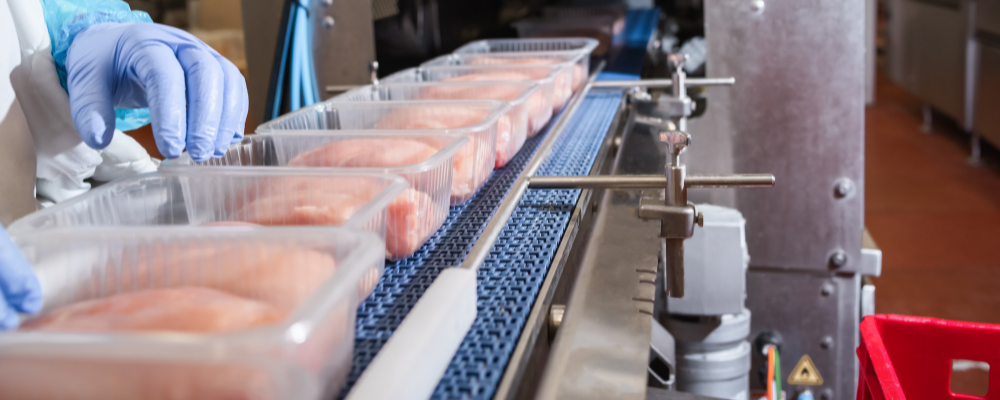By Jim Rabuse | August 17, 2022 0 Comments

Sustainable Packaging in the Food Industry
In recent years, sustainable packaging has become a topic of interest as the world has become more aware of the impact that our actions are having on the environment, and consumer preferences have shifted towards sustainability. Unfortunately, the food industry is a major contributor to environmental pollution due to the large amount of plastic packaging, and packaging waste that is produced during the production, transportation, consumption, and destruction of material.
Therefore, sustainable packaging is key to reducing the amount of waste in the food industry. In this blog post, we will discuss sustainable packaging in the food industry, the challenges of sustainable packaging, and innovative solutions designed for your needs.
Sustainable packaging in the food industry
While sustainability is a major concern in the food industry today, switching to a sustainable packaging model is rather challenging. When it comes to designing packaging for the food industry, food safety is the priority. It needs to be able to keep food fresh, at a safe temperature for the necessary amount of time, while also being able to withstand temperatures required to fully cook the food. But, as demand for a sustainable foodservice packaging market is increasing, the variety products being developed is expanding.
Challenges of sustainable packaging in the food industry
When it comes to using recycled materials to package food, it is crucial that all materials are properly sterilized before being used on any food products. This is a challenge for the food packaging industry because recycled packaging can be easily contaminated with food waste and other substances that can potentially harm customers. For sustainable packaging to be used for any food products, it has to pass the Safe Quality Food (SQF) standard. The SQF is a standard for the food industry that ensures food safety throughout the stages of the food supply chain. The SQF features industry-specific codes that begin with primary production and continue through food manufacturing, distribution, food packaging, and retail. The standard is a risk-free food safety management system, so, it is necessary to make sure that any materials that have been recycled are clean and safe before they are used for food packaging.
Another challenge to sustainable packaging in the food industry is the lack of infrastructure. Sustainable packaging materials often require different handling and processing than traditional, single-use packaging materials. This can make it difficult for companies to implement sustainable packaging practices if they do not have access to the necessary recycling infrastructure. However, there are many initiatives underway to help address this challenge.
Innovations to overcome the challenges
Innovations in sustainable packaging are helping to solve some of the challenges associated with sustainable practices in the food industry. New materials and processes are being developed that have less of an environmental and economic impact. Some plastic packaging alternatives and packaging innovations that are currently being developed are,
Recyclable liners
Recyclable liners are made from materials that can be recycled, such as paper, cardboard, or recycled plastic. They are designed to line the inside of packaging so that food does not come into direct contact with the packaging material. The amount of waste generated by plastic packaging is reduced and makes it easier to recycle the packaging material.
Edible packaging film, and biodegradable packaging film
Edible packaging film, and biodegradable packaging film is made from materials that are safe to eat and will decompose in the environment. It is another type of film that is designed to line the inside of the packaging to avoid any direct contact between the food and packaging material.
Water-based ink
Water-based ink is a type of ink that is made from water and pigments. It is an environmentally friendly alternative to traditional inks made from petroleum-based products. Water-based ink is less harmful to the environment and does not require the use of hazardous chemicals for its production.
Compostable packaging
Compostable packaging is made from materials that can be broken down by microbes into compost. This type of packaging is designed to decompose in a commercial composting facility. Compostable packaging is a more environmentally friendly alternative to traditional packaging materials.
Paper-based insulation material
Paper-based insulation material is made from paper that is laminated with a paper liner. It is safe to come in contact with food and provides stability for delicate items. Paper-based insulation material is a more sustainable option than traditional materials such as Styrofoam.
Thank you for reading!
Sustainable packaging solutions are an important part of reducing the tons of plastic waste in the food industry. Sustainable packaging helps to reduce food waste by keeping products fresh for longer and reducing the need for single-use plastic packaging. By using sustainable packaging practices, companies can reduce their environmental impact and help to create a more sustainable food system.

About the Author: Jim Rabuse
Need Help?
Increase your productivity with entry-level of full-line packaging automation, reduce packaging costs, and increase product protection with a full catalog of packaging supplies.